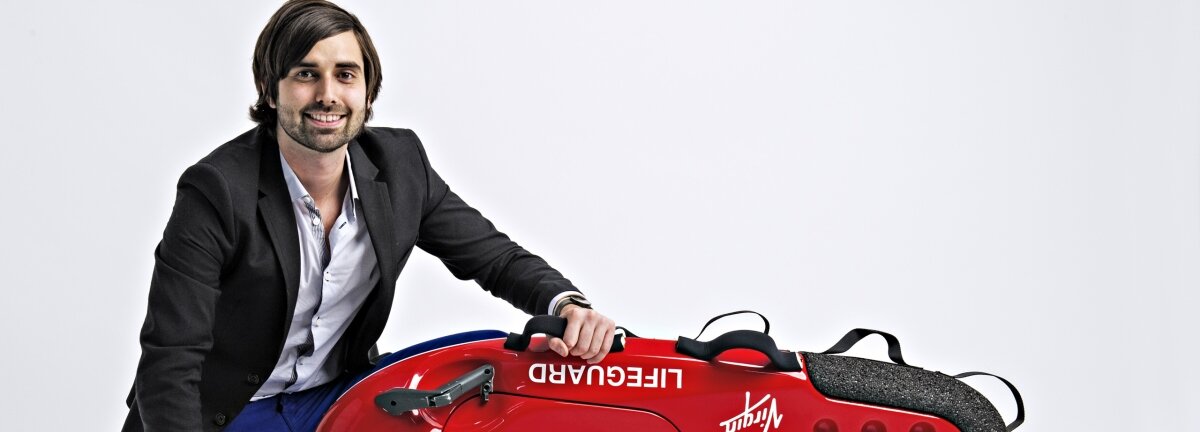Ones to Watch: Don’t tell me – show me

Designer of the Asap water rescue craft and Ones to Watch winner Ross Kemp discusses the magic of making and how it’s possible to be creative with very few resources.
I used to think that to bring a product to market you needed a huge budget, shiny offices and a factory in China. But having gone through the most amazing adventures in the past three years while developing the Asap rescue water craft, I’ve found that actually you can be at your most creative when you have very little or even nothing. It is then we product designers excel.
When I studied Industrial Design at Loughborough, we explored the ins and outs of designing a product. However, for me, the magical moments came when we made models. Our ideas came to life – for the first time, they became real.
We could put tangible inventions into the hands of our friends and families, and proudly say: “I designed that!” Just maybe, for a split second, they might believe it could be a real product available for them to buy.
Making believable products is what us product designers do best, and I’ve found lots of designers don’t do it soon enough. Whether pitching for investment or simply explaining your idea to a mate, having something tangible to put in their hands suddenly makes it much more real.
Learning how to be very resourceful – begging and borrowing wherever I could – allowed my product to survive.
Ross Kemp, designer
We are super lucky as product designers in that we are generally pretty good at making things (it’s our job actually). This means, even with a bin full of scraps, we can build not bad looking prototypes.
When I worked at the vacuum cleaner brand Vax, every project started with making a prototype out of what we could find in the bins before the company would invest any further.
Learning how to be very resourceful – begging and borrowing wherever I could – allowed my product to survive. I did everything from asking companies for free samples and offcuts to help make the latest prototype through to offering royalty payment deals, to afford those expensive people I wanted to work with.
Show me, don’t tell me.
David Oldfield, Managing Director, Lloyds Bank
After winning Best UK Start Up from Lloyds Bank I had a mentoring session with Managing Director David Oldfield. In response to my ideas, David kept reiterating the phrase: “Show me, don’t tell me.” I loved this approach and really took it on board.
As well as being resourceful, I also had to find creative ways to personally survive. I was sure that others could learn a few tricks from how we product designers think, so for the last few years I have given talks and workshops up and down the country.
Part of what I do is co-run an Innovation workshop in schools. We get students to come up with a product idea, design it, figure out the business behind it, prototype it from scraps found in the bin, and then pitch everything to the room. These intensive workshops show students just how quickly their ideas can come to life and gain real value.
I have seen app, online and service based businesses launch and grow quickly. However, I wonder if virtual products give their creators this same buzz.
For me, there is something special about being able to hold something in your hands – it seems to answer so many questions that an image can’t. The launch of Design Council’s Spark product innovation fund to inspire and boost physical invention alongside the recent plethora of support being shown for software start-ups in the UK is therefore timely and exciting.
Since school, we designers have been awesome at show and tell, so let’s make things more – show me, don’t tell me!
Subscribe to our newsletter
Want to keep up with the latest from the Design Council?
